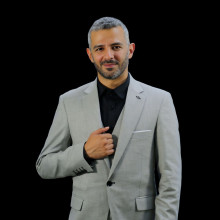Microwave Transmission Course (END to END)
Microwave Transmission Microwave Cycle Information on the Communication Infrastructure (Point-to-Point) Every Telecommunications Engineer Needs
English
Last updated
Wed, 24-Sep-2025
The first step to understanding networks starts at the heart of microwave technology!
The Microwave Transmission – END to END course by My-Communication Academy provides a practical and professional introduction to modern microwave communication technologies. This course aims to equip trainees with a solid foundation in designing and implementing wireless microwave links, focusing on system components (ODU/IDU), link calculations, environmental challenges, and performance enhancement techniques such as Carrier Aggregation and Super Dual Band.
Whether you want to grasp the basics or enhance your skills in building efficient networks, this course offers a comprehensive vision to enable you to professionally execute integrated wireless transmission projects.
The main goal of the course is to enable trainees to implement integrated wireless linking projects using microwave technology, thus advancing their professional capabilities in the advanced telecommunications market.
The Microwave Transmission course aims to enable participants to work efficiently in microwave network design.Objectives include:
Understand fundamentals and techniques of microwave transmission
Learn the structure and components of microwave networks
Study wave propagation effects on signal quality
Differentiate between Indoor Unit (IDU) and Outdoor Unit (ODU)
Explore advanced techniques like Super Dual Band (SDB) and Carrier Aggregation (CA)
Learn to design optimal transmission paths
Perform accurate wireless link budget calculations
Manage Non-Line of Sight (NLOS) challenges
Use tools and methods to improve network performance
Understand traditional digital hierarchy (PDH) and modern transmission technologies
Execute integrated wireless linking projects with microwave systems
This course is ideal for professionals and students seeking to enhance their skills and knowledge in microwave communications:
Telecom engineers
Electronics and control engineers
Computer engineers
Information systems specialists
Network engineers and students
Point-to-point wireless communication and design
Comparison between microwave and optical transmission in range, capacity, and cost
Choosing the best transmission technology based on network needs
Real-world case studies to aid decision-making
Microwave network topologies( point-to-point and multipoint networks)
Microwave transmission framing for data synchronization and interference reduction
Outdoor Unit (ODU): antennas and transmission/reception devices
Indoor Unit (IDU): processing, distribution, and management functions
- Intermediate Frequency (IF) role
- Microwave antennas: directional and omnidirectional types, selection criteria based on gain and beamwidth
Fresnel Zone: concept, importance, and impact on signal quality
Line of Sight (LOS) and Non-Line of Sight (NLOS) effects
Environmental factors affecting signal strength and mitigation
K-factor for compensating Earth's curvature and weather conditions
Free Space Path Loss (FSPL) calculation and dB conversion
Design factors influencing path loss, including K-factor
Link budget accounting for path loss, antennas, and power balance
Antenna characteristics and their effect on coverage and signal quality
Digital modulation methods like QAM to increase data rates
Carrier Aggregation (CA) to enhance network capacity and performance
Super Dual Band (SDB) technology for improved coverage and quality
Use of MIMO to boost capacity and efficiency
Role of PDH in microwave networks
Transition to modern systems like SDH and integration approaches
LOS (Line of Sight)
nLOS (Near Line of Sight)
Fresnel Zone
FSPL (Free Space Path Loss)
ODU (Outdoor Unit)
IDU (Indoor Unit)
IF (Intermediate Frequency)
Microwave Antennas
Carrier Aggregation (CA)
Microwave Frequency Bands
K Factor
Network Topologies
Bandwidth
MIMO
QAM
BER (Bit Error Rate)
LOS means there is a clear, unobstructed path between the transmitter and receiver antennas, which is essential for strong signal quality in microwave links.
In nLOS, the path between antennas is partially blocked by obstacles (like trees or buildings). Signals can still pass through reflections or diffraction, but performance may be degraded.
FSPL measures the loss of signal strength as it travels through free space. It depends on distance and frequency: higher frequencies and longer distances cause more loss.
The ODU is mounted near the antenna and handles RF (Radio Frequency) transmission and reception, reducing signal loss by keeping the RF components close to the antenna.
The IDU is installed indoors and is responsible for signal processing, modulation/demodulation, and interface with the core network, while the ODU deals with the RF signal.

Eng. Ibrahim is a distinguished expert in telecommunications engineering, with more than 16 years of experience in the design and planning of telecommunications networks.